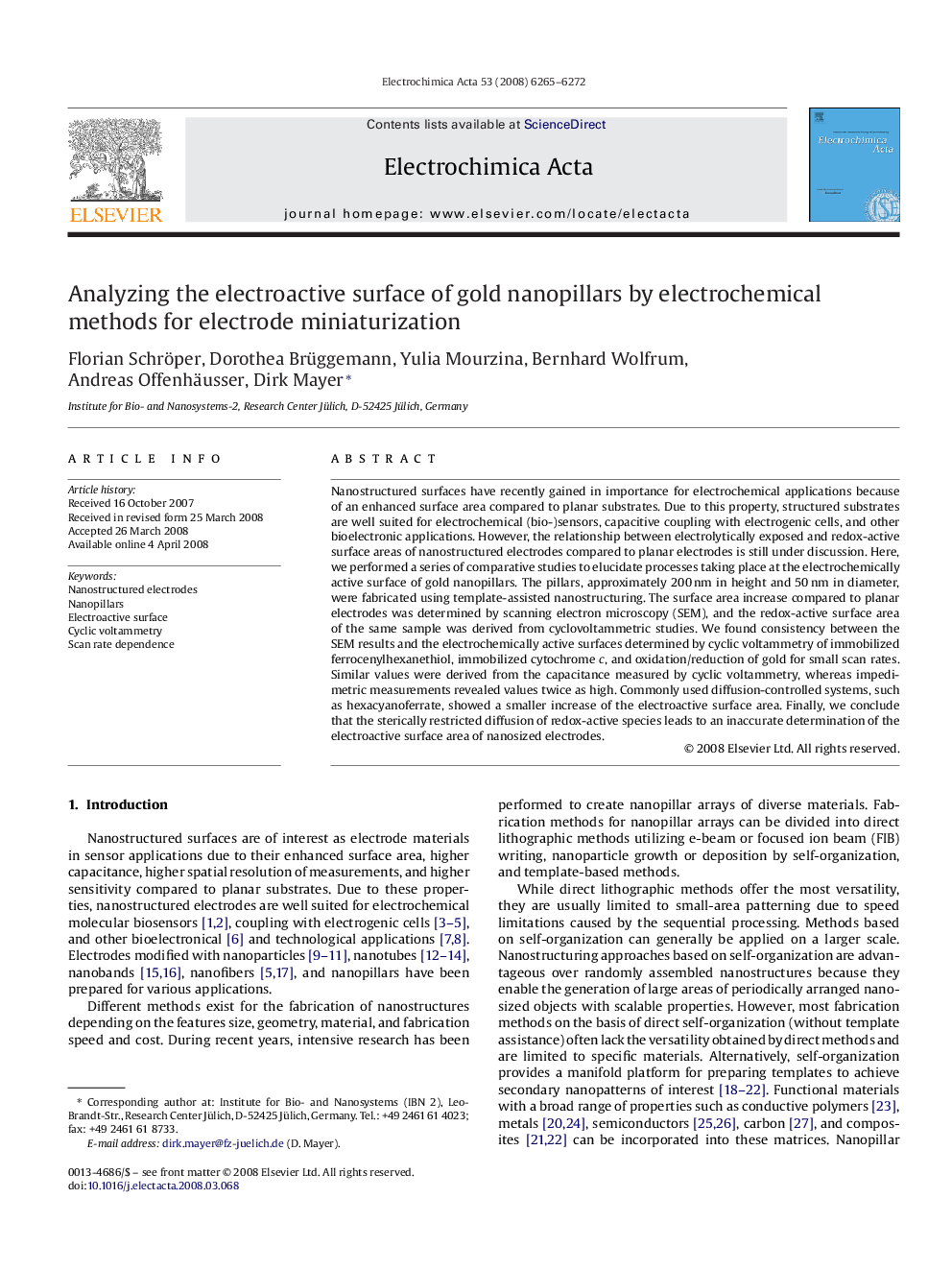| Article ID | Journal | Published Year | Pages | File Type |
|---|---|---|---|---|
| 192503 | Electrochimica Acta | 2008 | 8 Pages |
Nanostructured surfaces have recently gained in importance for electrochemical applications because of an enhanced surface area compared to planar substrates. Due to this property, structured substrates are well suited for electrochemical (bio-)sensors, capacitive coupling with electrogenic cells, and other bioelectronic applications. However, the relationship between electrolytically exposed and redox-active surface areas of nanostructured electrodes compared to planar electrodes is still under discussion. Here, we performed a series of comparative studies to elucidate processes taking place at the electrochemically active surface of gold nanopillars. The pillars, approximately 200 nm in height and 50 nm in diameter, were fabricated using template-assisted nanostructuring. The surface area increase compared to planar electrodes was determined by scanning electron microscopy (SEM), and the redox-active surface area of the same sample was derived from cyclovoltammetric studies. We found consistency between the SEM results and the electrochemically active surfaces determined by cyclic voltammetry of immobilized ferrocenylhexanethiol, immobilized cytochrome c, and oxidation/reduction of gold for small scan rates. Similar values were derived from the capacitance measured by cyclic voltammetry, whereas impedimetric measurements revealed values twice as high. Commonly used diffusion-controlled systems, such as hexacyanoferrate, showed a smaller increase of the electroactive surface area. Finally, we conclude that the sterically restricted diffusion of redox-active species leads to an inaccurate determination of the electroactive surface area of nanosized electrodes.
